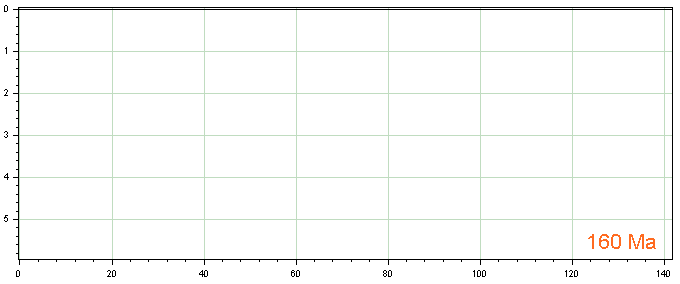| Trinity Movie Examples |
| | Home... | Gallery... | Brochure ... | Products ... | |
Norway offshore cross section ...
This shows the progradation sequence of the last 5 million years, and the erosion at 1 Ma by flowing ice of the Norwegian channel.
Other movies: Giant discoveries | Expulsion movie | Maturation movie | Western Canada example | Salt restoration | 2D migration movie | 3D subsidence and maturation | Burial history movie

This model shows an important concept in basin modeling that is often neglected by modelers. Basins form due to tectonic (compression, rifting) and gravitational forces. Sediments are deposited in the basin by filling depressions. The back stripping method used in basin models typically lead to significant changes of structure geometry through time. In reality the deeper structures form early and stay unchanged when new sediments fill the basin. Sediment layer thickness varies because of sea floor topography, and direction of sediment supply. It does little to change the underlying geometry. The weight of the sediment does cause little bit of additional subsidence but that happens at a much longer wave length due to the flexure strength of the lithosphere.
In this model, proper paleo-bathymetry was constructed through time. You may see the Pliocene progradation of sediment into the basin, and subsequent erosion due to glacial ice flow cutting into the eastern part of the basin, have not affected the deeper Mesozoic structure geometries. It is not depth, but the geometry of the sea floor through time that is important to restore. Without it, basin models exaggerate the geometry change that affect migration of hydrocarbons through time. If is often better to use present day geometry to model migration, than trying to use back stripping to study migration through time.
Copyright ©2001-2014, ZetaWare, Inc. All rights reserved